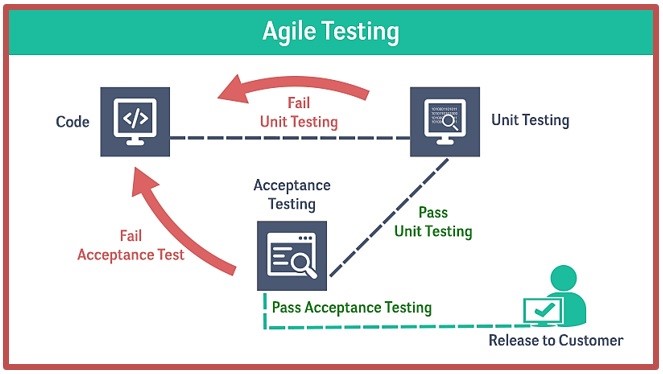In today’s era of extreme competition, every organization is striving to update their digital services, whether it is their website or mobile app. Everyone wants to provide the best service to their consumers without overstepping their budget and in the least possible time.
With more than 2.8 million apps on the Google Play Store, it is hard for a brand to survive without creating one. What’s more, people use apps for anything and everything- whether it is ordering food, staying in touch with family and friends or playing games. Users download apps from renowned developers such as AirG and reading AirG app reviews to get their hands on the best.
In the past, app developers used to develop the idea and framework for their app, create a code, write some unit tests and hand it over to QA to test it for functionality and performance once it was “ready.” But when it comes to maintaining an excellent mobile app development standard, this technique is outdated and will not suffice to build and test apps.
The reason behind it is that the traditional testing approach can give birth to many complications, especially towards the end. It is massive wastage of finances and efforts when a multitude of issues arise after the app has been finished. One has to go all the way back and correct them one by one. This is why many developers are turning towards agile methodology to save time and money.

What is the Agile Methodology
Agile app testing method is an approach that is integrated into the whole process of product development. Testing is treated as a continuous part of the app development lifecycle. Using an agile testing approach puts quality at the core of the whole development process.
In this process, testing is not done at the end. Instead, it is divided into a series of orderly arrangements like multiple sub-tasks. These mini-projects are looked after by the development team, and any problem that is identified is solved immediately. Regular communications between all the concerned parties, such as the customer and the developer, make the process very flexible.
As a result, if the customer or project manager raises a demand, it can be incorporated immediately and does not waste any unnecessary time- making the agile testing methodology extremely successful.

Benefits of Agile testing methods:
1- Facilitates early testing of the app
As discussed above, in traditional waterfall method, testing phase begins after the whole app is completed. However, in agile testing methodology, these activities run simultaneously. Agile testing methods deliver daily using Continuous Integration methods. So, testers can get updated builds regularly to test the latest code.
What’s more, in agile testing both developers and testers perform the test. Developers can easily perform automated unit testing before forwarding it to the testers. This helps testers to focus functional, integration and regression testing. This results in an improved and refined product quality.
2- It is easier to implement changes
A waterfall mode can only be used for a fixed scope, and it can’t be changed during the development of the product. In agile methodology, it is easier to incorporate additional features and demands during the process. There is ample time for testers too. While developers write the code, testers concentrate on writing new test cases. Ideally, testers should be ready on their end before the code is delivered to them for testing purposes.

3- Reduced time and cost
In a traditional waterfall testing model, a defect can only be fixed after it has passed through the whole development lifecycle. This eats up a lot of time of the team and also requires extra funds. While in the agile methodology, the defects are fixed during the sprint itself, resulting in reduced time and costs.
Teams that opt for agile testing methods are well communicated too since all members like developers, testers, architects, content writers, etc. are in the same boat. While they are working together, the informal communication between them plays a major role in excelling the quality and the delivery time of the product.
4- Can’t skip testing in Agile
As we discussed above, during agile testing methodology the app is developed and tested side by side. This is why the importance of testing cannot be ignored during the app development life-cycle. The scope of testing in agile can vary from product to product, but it cannot be skipped altogether.
5- Improved product quality
Since testers break from the monotonous cycle of functional testing or module testing, they have a much better knowledge of the product’s functionality. End to end scenarios give them a lot of ideas by which they can improve the product from end user’s point of view. They can even provide developers specific situations even before coding is started, which reduces the chances of defects from scratch. Hence, a much better product is developed in the end.
Conclusion:
An agile methodology is a powerful tool for app development. It not only offers benefits to the development team but is also a win-win situation for the client. Agile technology helps the project teams deal with common project pitfalls in a much more focused way. By reorganizing certain steps involved in traditional software development, agile achieves the same objectives in a better way.
What are your opinions regarding agile methods? Has mobile app testing throughout development benefited you as a developer or a client?

About the Author:
Alma Causey is a Freelance writer by day and sports fan by night. She writes about tech education and health related issues. Live simply, give generously, watch football and a technology lover.
